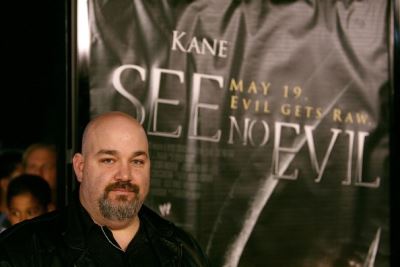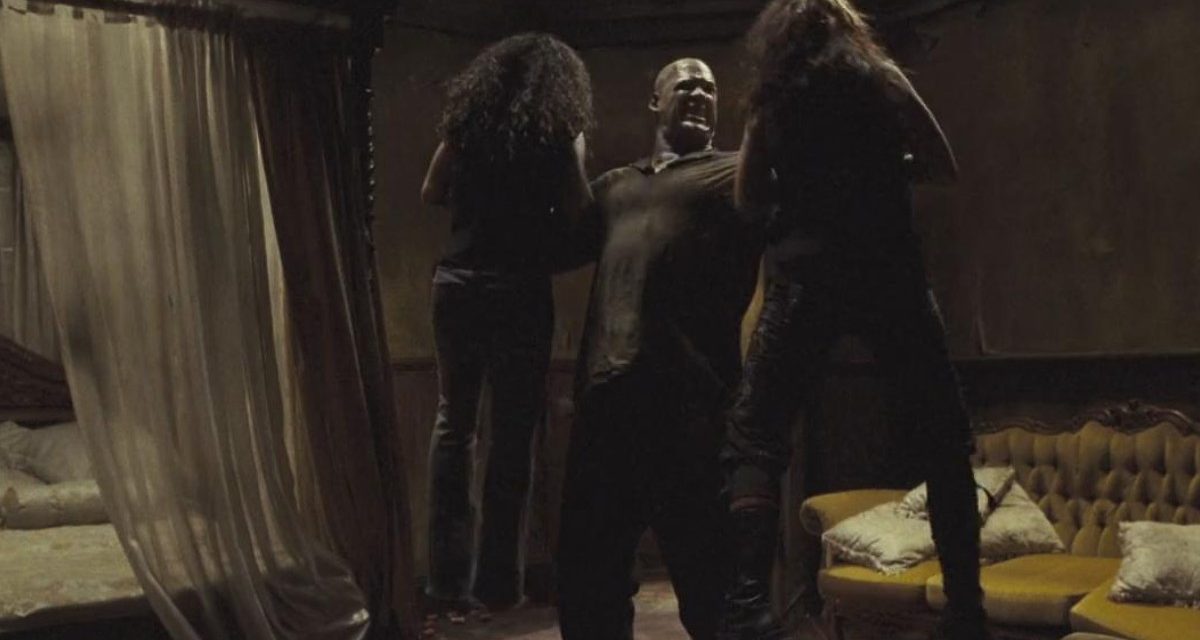The words “WWE Creative” are often thrown around in wrestling discussions. Wrestlers and former WWE employees have spoken at length over what goes on behind closed doors within the world’s largest wrestling promotion. And little has been positive. Recent high-profile admonishments came from Jon Moxley, who lambasted WWE and particularly Vince McMahon for causing him incredible creative distress, and from Dustin “Goldust” Rhodes who referred to WWE as a “prison” when referring to the creativity (or lack thereof) that he experienced.
Some people have dismissed these claims as ramblings of bitter ex-employees, and that their comments don’t provide an objective perspective. However, there are many that can. Dan Madigan, a former WWE creative writer, is one of them, and he spoke to SLAM! Wrestling and described the things he experienced while working there.
Madigan was initially hired not to write WWE storylines, but to write WWE’s feature film See No Evil starring Kane. But soon afterwards he found himself thrust into that byzantine labyrinth in which few people were trusted, everyone was paranoid about their spots, and creative decisions changed on a whim. He was initially met with suspicion and guarded looks, which he explained as wrestling figures being wary of outsiders. Once he introduced himself, the wrestlers around him became more comfortable. Initially, he was charged with writing for WWE’s heels and anti-heroes like Kane, The Undertaker, and Kurt Angle. He also got to work with Eddie Guerrero a lot, including being the main creative force behind Eddie’s famous feud with JBL, which Madigan really enjoyed.

Dan Madigan at the premiere of the film See No Evil.
But that didn’t change the overall atmosphere of WWE’s creative world. In Madigan’s own words, “the head writer position (which he was offered only two weeks into his WWE tenure) was not respected backstage at all, by the wrestlers or the production team. ”
And that’s just scratching the surface of the challenges he faced during his tenure in WWE.
“I envisioned a lot more creative freedom working there, that is what I was led to believe when I was being interviewed. But once I was there I found out that there was so much creative stagnation that it became smothering for anyone that wanted to think differently. ”
Madigan experienced firsthand the political minefield that is WWE’s backstage environment. He described how WWE has a clear hierarchy in terms of who was important to the Writer’s Room and who was not. Madigan confirmed one of the most widespread rumors that have existed for years about WWE’s backstage environment: the inconsistency among people in charge. Madigan described how one person would ask him to do something verbally, and then he’d get an email asking why he was doing that.
“I was once told to work with some mid-card talent by Stephanie [McMahon]. Try to develop some angels or gimmicks for the mid-carders that might pump them up. So when I sent Stephanie an email with ideas for teams like The F.B.I., the Basham Brothers, Rhino and others her reply was, ‘Why are you wasting time with these people??‘ … that was the general way things were run when I was there. ”
In another instance, Madigan wanted to change some things about the SmackDown brand, but it was shut down for a bizarre reason, again courtesy of the head family in charge.
“So what I wanted to do was create something on Smackdown that would be unique to that brand and set us apart. That is when I pushed for a whole bunch of luchadors to be brought up to work a program with Rey Mysterio. Luchadors working in America is not a new thing at all. They have always worked here and have done well. Paul [Heyman] used many top luchadors before as well and got great results. Now something like this you can’t just bring up one guy. That doesn’t benefit anyone. You need to bring up several guys so they all understand the lucha style and then you can create multiple programs all at once. I had a list of top luchadors who I thought would work well up here and we could create a Junior Heavyweight division that would be full of high flyers. But when I pitched my idea to Vince he looked at me and said, ‘We already have one masked wrestler on the roster (meaning Rey Mysterio) any more masked wrestlers and we’ll confuse the fans.'”
This was despite the fact that, at its peak, WCW had at least five different masked wrestlers wrestling in high-profile matches regularly and few people ever said they were confused between this luchador and that one.
Aside from some weird stories about WWE’s top brass having questionable logic, Madigan also described how micromanagement has been the true source of WWE’s gradual decline in popularity. From his perspective, WWE’s creative team overthought so many issues instead of keeping things simple and logical. As a result, “all creativity, spontaneity and improvisation were squelched.”
“No matter how far-fetched a character may be or how outlandish a persona maybe morph into, there has to be some part of that character or persona that resonates within the wrestler portraying it, there is a real person behind all that. And if you can get at least ten percent of a person’s personality infused into their character then you have a base to work upon. If you try to bring something completely foreign to someone and say, “Here, become this persona that we think you should become,” there will be some natural resistance and automatic hesitation. ”
That particular philosophy has been seen in action many times over the past 15 years, but is best demonstrated with Jon Moxley’s recent departure and subsequent interviews. He described how WWE Creative — in particular Vince McMahon — pitched not only things the Dean Ambrose character should do, but also scripted the character’s promos word-for-word, even if the person portraying the character didn’t think it made sense. Moxley’s rise to the top of AEW is good proof that he was held back.
This approach seems to have become fully ingrained into the collective minds of WWE Creative, as its approach seems to have focused on creating characters and shoe-horning a wrestler into playing that character, instead of giving wrestlers with pre-established notions of their wrestling ‘self’ the chance to flesh out realistic personalities.
As further proof of this bizarre creative nonsense in the Writers’ Room, Madigan told an interesting story about how the writers would react differently to a story depending not on the story’s strength and merit, but on who came up with the idea in the first place.
“I remember that referee Jimmy Korderas would pitch me great ideas, things that were really unique. And I would bring up the idea in the Writers’ Room and I would gauge people’s reactions but as soon as I mentioned that the idea came from Jimmy Korderas everyone started rolling their eyes and the idea become no good. I asked, ‘Why the hell is it not a good idea now?’ If anyone knows how the crowd reacts it would be a referee, especially one that is in front of a large crowd several nights a week. They get to gauge the fans, have their fingers on the pulse of the audience. ”
Simply put, an unofficial rule existed in WWE where if an idea originated outside of the creative department, it was no good. Madigan elaborated on this by noting that these writers were afraid of outside ideas being better than their own. Their fear was that Vince McMahon would get angry and wonder why he’d have hired them [the creative team] when a wrestler could to their job instead?
In other words, the fear of losing one’s job led to outside ideas being rejected altogether, which in turn means that some potentially great story ideas crafted by the people inside the ring went forever ignored.
Even worse yet, Madigan noticed a critical problem common to virtually all the people at the top of WWE’s creative department: they lacked an innate sense of story.
“I could see that the idea of a continuous narrative or prolonged episodic storytelling was not paramount on their list because they kept constantly changing ideas on a whim with no real basis for altering things. We would spend weeks, sometimes months, on a character or angle and then someone would get in Vince’s ear and that character or angle would be gone. I learned a lot of that from Paul Heyman. It’s the same with writing a screenplay or novel. Know your ending. If you create an angle have a solid idea where you think it should go. It can change along the way but at least have some sort of narrative signpost to guided you along the way.”
However, not everything about the McMahons is negative. Madigan did praise Vince for his dedication and his drive for success. And even though he considered McMahon to be incredibly demanding, in being so, he did bring out the best out of everyone.
The only sad part is that Vince does indeed — as CM Punk once said — surround himself with yes men that are too afraid to challenge him on any of his ideas. It takes incredible fortitude to stand up to someone like Vince McMahon, and Madigan was one that did it. Though many of his ideas never say the light of day or were nixed after he had begun working on them, there was one (in)famous Vince McMahon idea that Madigan had to challenge him on or face financial ruin.
One of the wildest rumors that circulated after See No Evil was released in 2006 was that Vince McMahon wanted Kane’s film character to unveil a three-foot penis. Madigan confirmed that this was indeed an idea McMahon wanted in the film. The following quote perfectly encapsulates what WWE’s creative environment is like, and the kind of people that Vince has working for him.
“It seems that Vince had this brainstorm that Kane pulling out a monstrously immense penis would be a good idea and the producers on the film that worked for Vince’s production company didn’t have the balls to tell Vince it was a bad idea. Of course they said, ‘Three foot penis? That’s a great idea Vince.’ When I heard this, my jaw hit the floor because I knew the two producers who worked under Vince would ‘yes’ him to death and he would move forward with this idea.
“So the next time we were in a production meeting for the television shows Vince brought up the three-foot penis scene, all the other writers in the room sadly thought this was a good idea. I felt like I was in some sort of surreal nightmare with everyone except me thinking that the three-foot penis was a god awful concept. Once I broke it down on a financial level Vince started to see the light and the concept for that scene died on the vine, thankfully. ”
As long as WWE’s creative environment allows for this kind of behavior, that company’s creative future will remain in doubt.
RELATED LINKS

